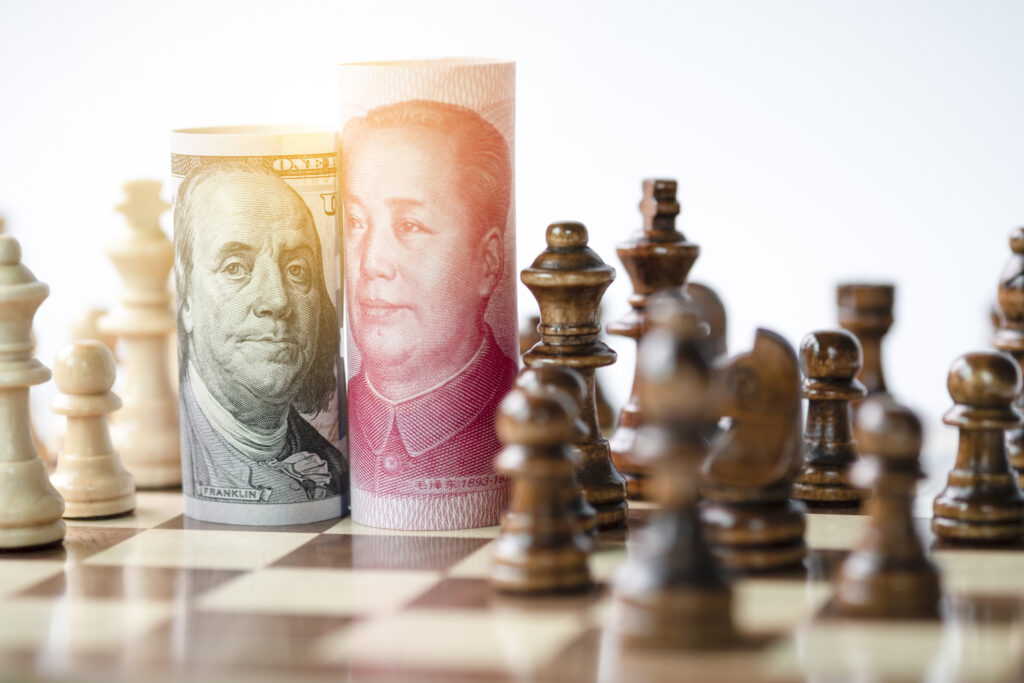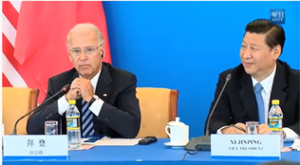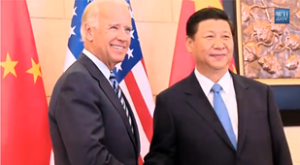
The incoming president has vowed to bring a sense of normalcy back to the United States. But on China, he can’t go back to the way things were pre-Trump, either.
Editor’s note: This is the first entry in a 10-part series that we are calling the “Build Back Better Blueprint.” Over the next two weeks, we’ll examine the policies and priorities that President-elect Joe Biden should focus on as he looks to lead America out of the COVID-19 pandemic and rebuild the American economy. Up first: What to do about China.
President-elect Joe Biden met Xi Jinping, now the authoritarian Chinese leader, at least eight times over a short span nearly a decade ago, while both were serving in vice presidential roles. Biden says he wanted to measure Xi, build a relationship, and probe China’s intentions.

Now Biden calls Xi a “thug.” It’s fair to say Biden’s views and approaches on China have evolved, and in many ways hardened, over time. But as president, Biden also is likely to face pressure by some in Congress, cheered on by Wall Street and global companies, to return to a policy of appeasing China’s misdeeds at the expense of our national values, our jobs, and our future.
There is growing bipartisan agreement that China is at best a strategic and economic competitor, and at worst, a dangerous threat to democracy around the globe. President Donald Trump’s Director of National Intelligence leaned heavily toward the more dire possibility in a recent Wall Street Journal op-ed, calling China a “once-in-a-generation challenge.” Rather than accuse the DNI of alarmism or bellicosity, Rep. Adam Schiff (D-Calif.), chair of the House Intelligence Committee and a noted Trump critic, said:
“It’s imperative the Intelligence Community rebalance its focus and funding to more effectively address the vast array of challenges that China poses to our national security. This is an area of substantial bipartisan agreement, and a challenge we must rise to meet.”
As Biden takes office, he’s faced with a rising China that has recovered much faster than the U.S. from the pandemic. He’s also been handed a relationship that Trump promised to transform but instead made more transactional and frayed than ever.
To its credit, the Trump administration (along with Members of Congress on both sides of the aisle) rightly pressed China on issues like the genocide against the Uyghurs, civilian-military fusion, and espionage. But there’s more work to be done, and in the meantime, Trump’s “Phase One” trade deal has fallen well short of its goals.
While Biden will have the backing of a substantial bipartisan coalition of lawmakers to pursue a bold and aggressive policy towards China, the team he has assembled so far has been criticized by Sen. Marco Rubio (R-Fla.) as being “weak” on China. Multinational businesses have already urged Biden to drop the tariffs that Trump placed on certain Chinese imports but, to his credit, Biden has already dismissed that notion.
Biden’s approach to China must have broader goals and lean more heavily on building (or rebuilding) alliances to pressure China on economic issues. Here are some concrete, actionable recommendations we believe could benefit American workers and businesses:
Prohibit China’s State-Owned and State-Supported Firms from Accessing U.S. Tax Dollars. In response to the economic fallout of the COVID-19 pandemic, Congress moved to make funding available to businesses of all sizes, but failed to ensure that these dollars are directed back into the U.S. economy. Worse yet, there are no guardrails to protect against China’s state-owned and state-supported companies from taking advantage of this massive amount of spending.
According to geopolitical consultancy firm Horizon Advisory, China’s leaders are closely watching U.S. spending and positioning its championed firms to benefit from our own recovery dollars – just as they did following the 2009 Recovery Act. According to a Chinese official quoted in the report, “Trump’s infrastructure investment plan is an opportunity for China.” Horizon Advisory has also clearly documented Chinese officials stating their intention to expand abroad in key sectors like 5G, high-speed rail, new energy vehicles, and artificial intelligence.
Enforce the Phase One U.S.-China Agreement. For American manufacturing and its workforce, the Phase One agreement is completely inadequate. But in the interim, we must vigorously monitor China’s progress in complying with the agreement and the commitments China made to purchase U.S. agricultural and manufacturing products. If promises are not kept, tariffs should be promptly restored, including those that were scheduled to take effect in December 2019. China has a long history of making oversized promises, only to abandon them when the attention shifts elsewhere.

Resume Negotiations on Major Structural Issues. With nearly all the major structural issues left unresolved by the Phase One agreement – including industrial subsidies, overcapacity, state-owned enterprises, predatory investment, currency manipulation and misalignment, cyber intrusions, worker rights, environmental rules, and tax policy – it is necessary to maintain pressure on China, using the leverage of remaining Section 301 tariffs to immediately resume negotiations on a new agreement.
The most notable omission in the Phase One deal is addressing the massive financial support provided by Beijing to Chinese firms deemed important to its economic and security interests. According to the Peterson Institute, “China now devotes more than three percent of its annual output to direct and indirect business subsidies — a share of the economy that is roughly equivalent to what the United States spends on defense.” China’s persistent non-market behavior has an enormous, negative effect on markets worldwide, including significant harm to U.S. exporters, import-competing industries, and their workers who are forced to compete against these subsidies. If China’s subsidies are not addressed in a meaningful manner, the United States’ ability to maintain or strengthen its steel, aluminum, glass, paper, cement, solar, electric battery, shipbuilding, and other important sectors will be compromised.
Beijing continues to strengthen its grip in the decision-making and control over its SOEs. China’s SOEs receive massive subsidies and are often deeply aligned with Beijing’s broader economic and security goals as parts of its military-civil fusion strategy. This is yet another indication that China is moving further away from its commitments and cementing its status as a non-market economy.
Keep the Section 301 and Section 232 Tariffs in Place Until the Playing Field is Truly Leveled. Those who have criticized the use of tariffs to gain leverage fail to understand what is at stake. Many of these voices assured us that China would reform when it entered the world trade system in 2001. Since that time, China’s predatory economic behavior has fueled an unprecedented $5 trillion bilateral goods trade deficit, including a record $419.2 billion in 2018. Our communities have shed more than 54,000 manufacturing facilities. A staggering 3.7 million jobs, largely in manufacturing, have been lost because of this massive trade imbalance, impacting every state and nearly every sector of our economy. These trends are unsustainable and put the future of our economy, national security, and country at risk.
This is a long-term process that will require a sustained, bipartisan commitment on the part of all U.S. policymakers, a process which Joe Biden can lead. The United States cannot afford to revert to its previous posture of endless dialogue and polite requests for reform. American workers and U.S. manufacturing companies need a deal that is comprehensive, specific, enforceable, and backed by strong and automatic penalties if Beijing fails to live up to its words – as has repeatedly been the case under previous administrations of both political parties – it is essential that we maintain pressure on China, using the leverage of remaining Section 301 tariffs to immediately resume negotiations on a better agreement.
AAM President Scott Paul talked about this blog post in a special episode of The Manufacturing Report podcast. Listen below.
